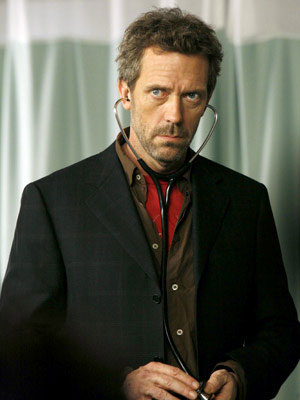 |
| Hugh Laurie in House: He only looks like he knows what he's doing. |
Seizure victims would do well to stay clear of Samaritans who have learned their first aid from television medical dramas like ER or House.
In more than half the epileptic seizures depicted by Grey‚Äôs Anatomy, House, Private Practice, and in the last five seasons of ER, the scriptwriters got the medical response wrong, a study by Ľ∆…ę÷Ī≤• researchers has concluded.¬†
‚ÄúIf someone was to base their first aid management on medical television shows and try to help someone out, they might be doing some harm,‚ÄĚ said Andrew Moeller, a third-year Ľ∆…ę÷Ī≤• Medical student who led the study‚Äôs four-member research team.
Given the influence of the medium, the researchers are calling on people with epilepsy to lobby the television industry to insist on proper first aid responses to seizures shown in small screen dramas.
To obtain the findings, Mr. Moeller watched 280 hours of television medical drama including every episode of Grey’s Anatomy, House, Private Practice, and the last five seasons of ER. He said he started his viewing marathon in January 2009, watching a program every two days, and then ramped up his screen time to five episodes a day, last summer.
‚ÄúAt the end of the summer it was getting to crunch time, so I was watching about 14 hours of TV a day,‚ÄĚ he said.
|
They reviewed the clips and compared the dramatic action against the Epilepsy Foundation’s Guidelines for Seizure First Aid.
Fifty-nine seizures were found in the plot lines, and 46 per cent of the dramatized medical responses by the doctor and nurse actors were considered inappropriate. They noted such poor medical form as holding a patient down, attempting to stop involuntary movement, and  putting something in a patient’s mouth while a seizure was in progress.
In about 29 per cent of the cases, the dramatic action was medically correct. The remaining seizure incidents were considered indeterminate, in terms of the appropriateness of the pseudo-medical response, because they were on screen too briefly to judge.
Mr. Moeller has been amazed by the response of the media. ‚ÄúI just Googled my name, plus ‚Äėseizure‚Äô and it‚Äôs everywhere, ‚Äú he said.
The research will be presented at the American Academy of Neurology’s 62nd meeting in April. It was one of 20 research offerings, selected from more than 2,000, to be released as an abstract, in advance of the meeting.

